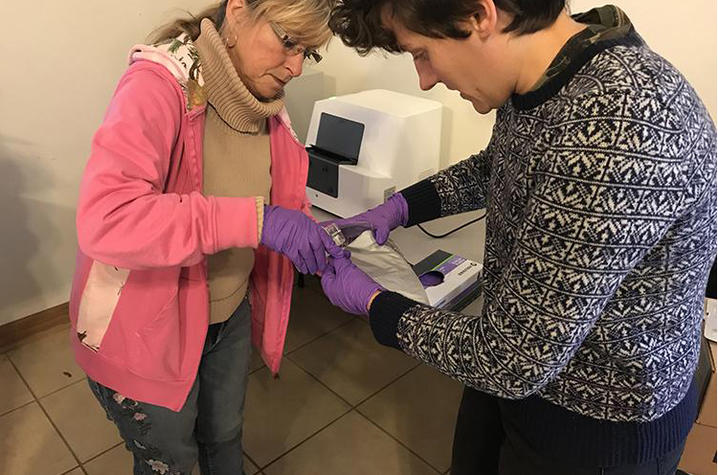UK Pilot Study Finds High Levels of Contaminants in Martin County Drinking Water Samples

LEXINGTON, Ky. (July 31, 2020) — Martin County drinking water regularly exceeded U.S. Environmental Protection Agency maximum contamination levels for cancer causing disinfection byproducts and coliform bacteria, according to preliminary findings of a University of Kentucky pilot study.
The pilot study was conducted by Jason Unrine and Wayne Sanderson, both professors in the UK College of Agriculture, Food and Environment, with funding from the UK Center for Appalachian Research in Environmental Sciences (UK-CARES) in the College of Nursing and the National Institute of Environmental Health Sciences.
The citizen stakeholder advisory board of UK-CARES connected the researchers with the group Martin County Concerned Citizens. The professors and citizen scientists from the group, including Martin County resident Nina McCoy, worked together on the pilot project, sampling drinking water and measuring it for contaminants in 97 homes in the Eastern Kentucky county. The yearlong study began in December 2018.
Nearly all Martin County survey respondents reported problems with their drinking water including odor, appearance, taste and pressure. Only 12% of respondents drink the tap water.
The UK researchers found 47% of the samples had at least one contaminant that exceeded U.S. EPA regulatory guidelines.
“We found that there were frequent exceedances of U.S. EPA maximum contaminant levels (MCLs) for disinfection byproducts in the summer and early autumn, although the EPA regulates these contaminants based on a running annual average and not in individual samples,” said Unrine, a professor in the Department of Plant and Soil Sciences. “Disinfection byproducts are associated with increased incidence of adverse health effects including bladder cancer and developmental birth defects in epidemiological studies. Some of these studies have shown associations with these health effects from disinfection byproducts at concentrations that are similar to the average concentrations we measured in Martin County. It is important to note that the cancer studies assume lifelong exposure.”
Disinfection byproducts are formed when natural organic matter interacts with chlorine during the water treatment process. Of the samples, 10% exceeded maximum contaminant levels for haloacetic acids, and 29% exceeded the maximum contaminant levels for total trihalomethanes. Both are disinfection byproducts. Concentrations of haloacetic acids were higher in homes farther from the drinking water treatment plant.
The UK researchers also detected coliform bacteria in 13% of the drinking water samples. This type of bacteria indicates the possible presence of harmful bacteria in the water. However, the researchers did not detect E. coli, which is closely linked to fecal contamination. The drinking water had higher levels of coliform bacteria and disinfection byproducts during the summer and early autumn.
“We think the seasonal increase is due to several factors, including water temperature, the increase in algae and organic matter in the Crum Reservoir and Tug Fork River and low water levels in the river and reservoir during these months,” Unrine said. “Future efforts at reducing disinfection byproduct exposure could address seasonal changes in source water chemistry and how adjustments to the treatment process and repairs to the distribution system might be made to reduce formation of these compounds.”
“Dr. Unrine’s team of expert citizen scientists and UK investigators highlights the promise of collaborative community-academic science to address intractable environmental health problems in our most vulnerable communities,” said Ellen Hahn, UK-CARES director.
The preliminary findings are available online at https://pss.ca.uky.edu/sites/pss.ca.uky.edu/files/martin_county_report_final.pdf.
As the state’s flagship, land-grant institution, the University of Kentucky exists to advance the Commonwealth. We do that by preparing the next generation of leaders — placing students at the heart of everything we do — and transforming the lives of Kentuckians through education, research and creative work, service and health care. We pride ourselves on being a catalyst for breakthroughs and a force for healing, a place where ingenuity unfolds. It's all made possible by our people — visionaries, disruptors and pioneers — who make up 200 academic programs, a $476.5 million research and development enterprise and a world-class medical center, all on one campus.




